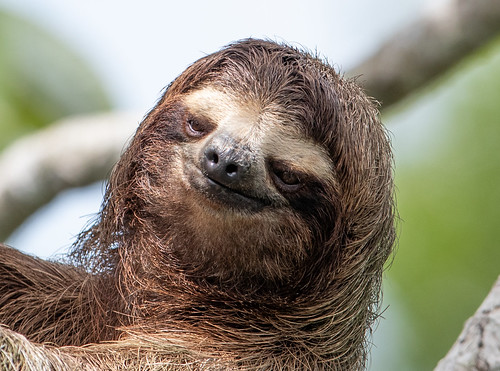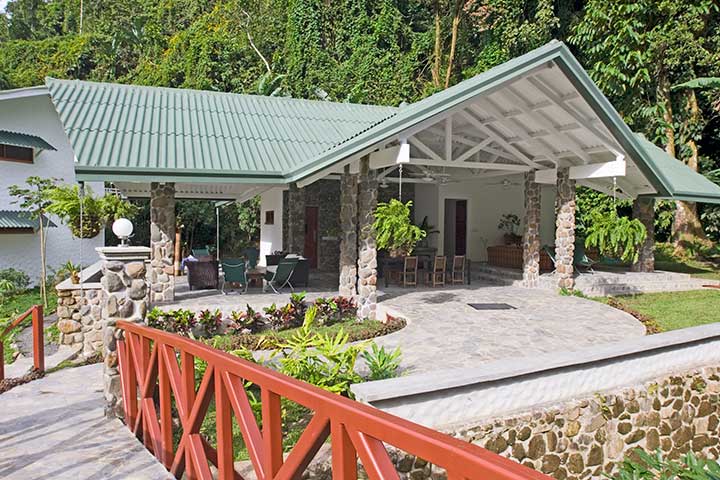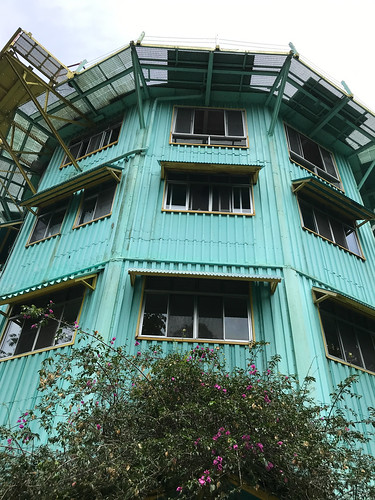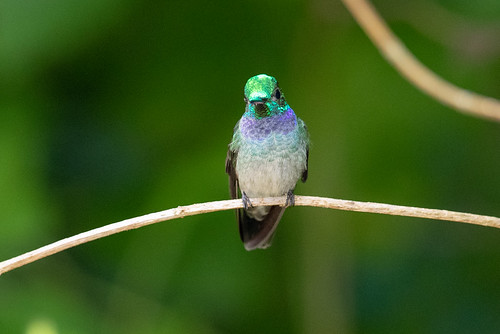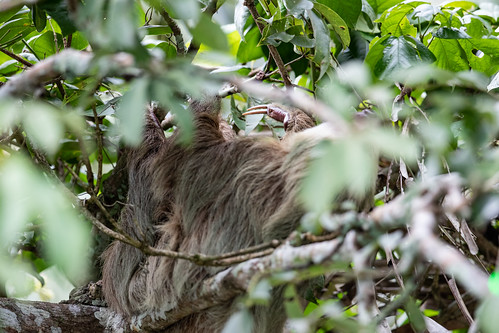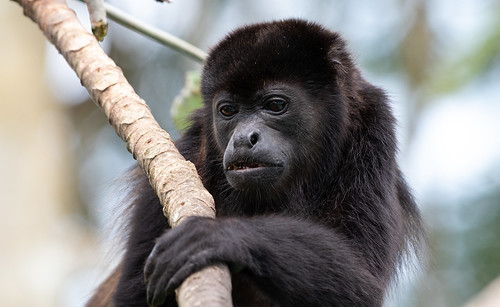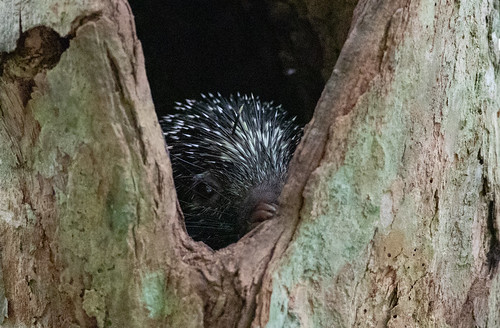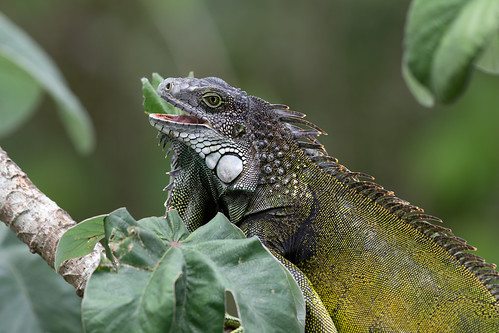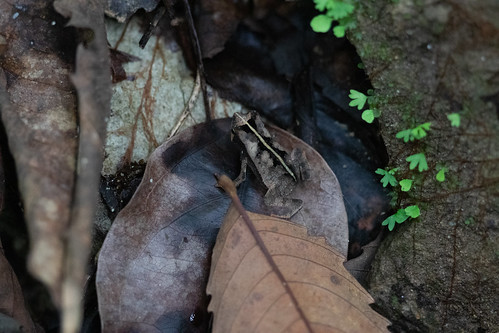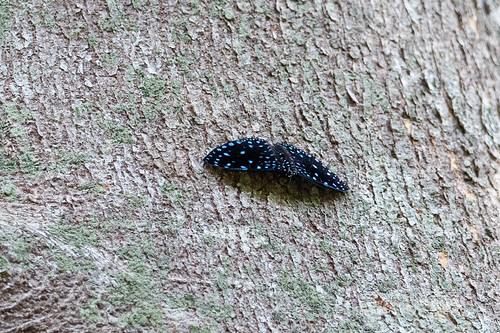We stayed at three birding ecolodges during our 10 days in Panama, all operated by a small company called the Canopy Family. Their stated mission is “To share the nature, history and culture of the Republic of Panamá with passion and enthusiasm, focused on customer satisfaction and guided by the principles of conservation and social responsibility.” They seemed to genuinely live up to that.
 |
| Waypoints I entered into Track My Tour. |
We spent our first three nights at the Canopy Lodge, in the Cerro Gaital mountains at El Valle de Antón in Coclé Province. Our spacious room was on the first floor. In those first three days we listed 138 species of birds.
 |
| Birding from the veranda at Canopy Lodge |
Next, we moved on to Canopy Tower, a decommissioned US Military radar station just 35 miles north of Panama City in the rainforest atop Semaphore Hill within Soberanía National Park.
The lodging rooms in this wonderful jewel are high, with the dining hall and lounge a floor higher, at canopy height. At the very top, where we enjoyed our morning coffee, is a beautiful observation deck.
Because the tower was originally part of a military installation, it was built without any sound-proofing between rooms or floors, and no elevators. We had to climb steep staircases to get to our rooms, another to get to the dining hall, and a hatch-type ladder to ascend to the observation deck. Working at my desk-treadmill for a year and a half has kept me in excellent shape. I didn’t feel the climb at all in my leg muscles nor my heart and lungs, but it felt very rigorous for some of the people in our group. The Canopy Tower was also the noisiest place we stayed at. The kitchen, right above my room, was very noisy starting about 3 am. I’m an easy sleeper and adjusted easily, and had it been harder, a dispenser providing free earplugs was conspicuous on the landing by our rooms. But the noise did make the Canopy Tower the one place where a clean natural dawn chorus sound recording would have been very hard to get.
I didn’t mind—being up at canopy level, the visual splendor was beyond compare. From right outside our windows was a cecropia tree in which a female sloth spent her days and a howler monkey occasionally visited to munch on fruits. My photos of them with my 300-millimeter lens were frame filling.
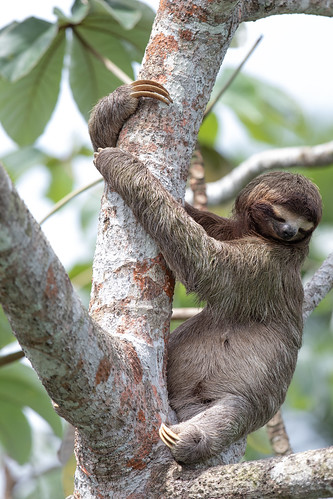 |
| Brown-throated Three-toed Sloth; uncropped photo from our window with my 300mm lens. |
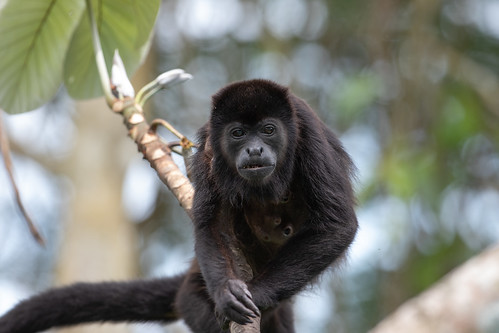 |
| Mantled Howler Monkey; uncropped photo from our window with my 300mm lens. |
From our room, the dining hall windows, the observation deck, and the entrance down below, we had wonderful close-up views of a rainbow of birds. We stayed at Canopy Tower just two nights, birding there and in nearby hotspots. As we drove away, our trip list stood at 211 birds.
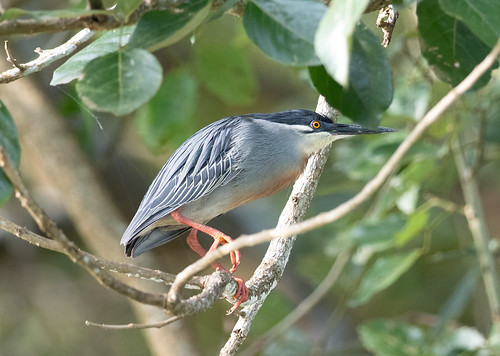 |
| Striated Heron |
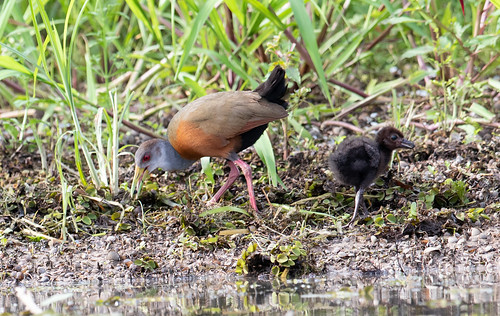 |
| Gray-cowled Wood-Rail with chick |
 |
| Rufescent Tiger-Heron |
During those first five days, we also visited what are called the “ammo dump ponds” in Gamboa. During World War II when the US had control of the Panama Canal, our military stored ammunition in bunkers to protect the canal from an attack. It was in this military zone, extending about 10 miles on both sides of the canal, where they dug several ponds to have easy access to water in case of fire. We rode in a safari-style truck along a road in Gamboa, seeing lots of cool birds in the ponds and huge container ships in the canal.
Our last four nights were spent in far eastern Panama in the Darien Province, at Canopy Camp in the humid lowlands near the end of the Pan-American Highway. Our accommodations here were tents, but we were hardly roughing it—each one was on a raised wooden platform and had electricity and a good fan, and the beds were extremely comfortable. The tents were designed well enough to withstand even a driving rain without closing the canvas on the screened sides.
Each tent’s private bathroom was made of slatted wood. The roof ended at the shower, leaving it open to the sky above. One night I took a lovely hot shower as pouring rain came down all around. The next night the skies had cleared, and the stars and full moon shone above. Either way, the experience was uniquely enjoyable.
Wildlife—both animal and vegetable—of the Darien province include many common Central American species but also South American species, which makes sense because we were so close to the Colombian border. After our four nights at the Canopy Camp, our trip list had ascended to 300. We made two final stops on our trip back to Panama City the final day, ending the trip with 310 species.
My dear friend Susan Eaton, my roommate throughout, organized this trip with the fantastic guide Ernesto Carman, who was also our guide in Costa Rica two years ago. He’s at the very top among birding guides, but he’s also right at the top among tropical naturalists, knowing a lot about just about everything. He kept us up to speed on many of the non-birds we saw throughout, and whenever I asked a question about anything, he had a sound answer.
The mammals we saw included two species of sloths...
four species of monkeys (but I only got photos of three, not the Colombian Spider Monkey)...
a tiny Rothschild’s Porcupine...
a few distant agoutis, and a quick look at a capybara.
We saw Green Iguanas throughout, which was nice in Panama where they actually belong—I’d also seen them in the Florida Keys this spring, but there they’re an invasive problem.
Also on the reptile front, we saw several crocodiles and a caiman from boats, some at very close range, and a few geckos, but virtually no other reptiles at all—not a single snake.
On the invertebrate front, I’d never heard of a group of butterflies called "crackers." They belong to the genus Hamadryas and make a cool cracking sound with their wings, both as a warning to predators and to communicate with their own kind. When I first heard the sound, I thought we were near a manakin lek—they make the same kind of arrhythmic percussive cracks—but I neglected to make a sound recording of the butterflies and can’t find one online. Oddly enough, the one cracker I photographed, the Starry Cracker, has apparently lost this ability to make sound. Whether or not the one I saw could make sounds, it was very quiet while I watched.
We saw a moth that looks like bird poop—it’s nocturnal and can spend the day safely roosting in the open because no sensible insectivores seek out bird poop.
We also saw the weirdest caterpillar I’ve ever seen.
On the one clear night we had, Ernesto trained his spotting scope on Jupiter and a line of three of Jupiter’s moons. That night I also grabbed a photo of the full moon.
But the reason I was there was to see birds, and they didn’t disappoint. I ended up with 58 lifers including the Harpy Eagle I so yearned to see, along with lots of photos and sound recordings.
 |
| Soaking wet fledgling Harpy Eagle. |
 |
| It's so lovely to get a photo of a lifer, like this Blue Cotinga! |
 |
| Rusty-margined Flycatchers were everywhere at Canopy Camp. |
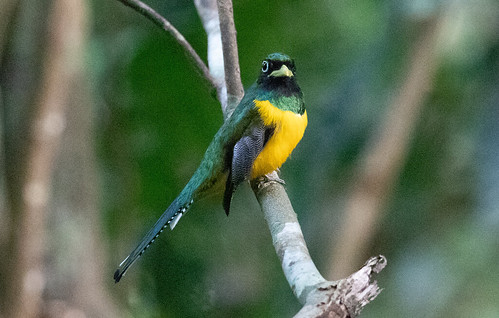 |
| Black-throated Trogons weren't a lifer, but were still a sight for sore eyes! |
 |
| Crimson-backed Tanagers (a lifer!) were easy to see at Canopy Lodge. |
 |
| We made a special trip to see this guy, a Common Potoo. |
I'm not very fussy about food when I'm birding, but many of the people in our group were, and they all seemed very pleased with the menu at all three facilities. A few people had diet restrictions of various kinds, and all were given special meals when the day's menu wouldn't have worked for them. All I know is, there were lots of choices at each meal, generous servings, and everything I ate was delicious.
If you plan a trip to Panama specifically hoping for Harpy and Crested Eagles, you might want to set the dates a bit earlier in the year than July. The Canopy Family works with local people throughout Darien Province to find an active nest for both species each year. In both species, when the adults are in the final stages of courting, laying their single egg, and incubating, all during our northern winter, it's apparently almost a given that you'll see an adult. When the chick is young and adorable, a parent stays with it all or most of the time. In early summer, when the chick fledges, the parents may remain close at first, but as the chick's flying and hunting skills improve, it can be five or six days between visits by the adults, and as the chick matures, it spends less time near the nest, too. We were the first group to entirely miss the Crested Eagle this year. The local experts and our guides spent two hours searching while we waited. I'd have been game to wait another hour or two—I've spent years standing to watch and count birds at Hawk Ridge and the Lakewood Pumping Station, and am used to it—but normal people, including all the others in my group, were at their limit after two hours of standing, exposed to the worst of the mosquitoes and heat. It was a sunny day, and apparently the Crested Eagle chick felt like testing its wings that day. We still saw plenty of birds and it was a lovely experience for those of us for whom the journey is always at least as wonderful as the destination. And now I have one more reason to yearn to go back.
I think, if I had to choose, that the Canopy Camp was my favorite of the three ecolodges for being so remote, but all three places were splendid and worth visiting, and spending time at all three gave us a wonderful sampling of the best of Panama. I don’t know if the Canopy Family plans to open another ecolodge closer to the Costa Rican border—that would be an amazing way to get a more complete sampling of the country from west to east, but what we saw and enjoyed was incredible.
